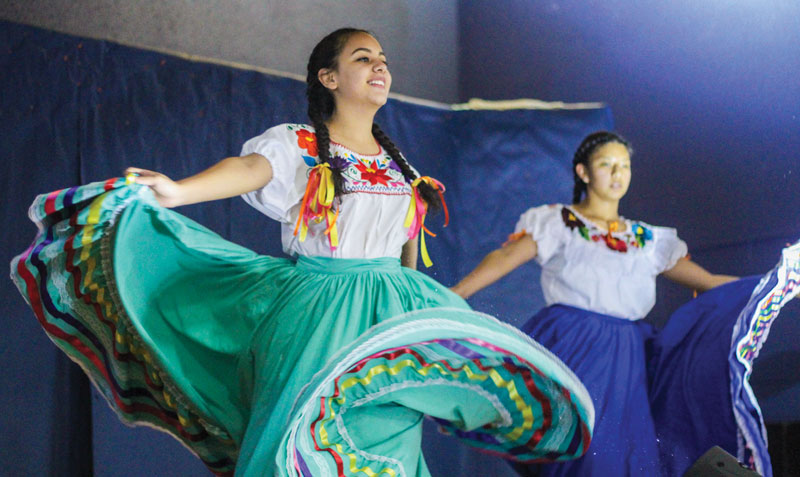
For thousands of families around the state, the feast of Our Lady of Guadalupe is a time for showing devotion to the Blessed Mother and pride in their heritage.
The feast day on Dec. 12 celebrates Mary’s appearance to St. Juan Diego, a poor young Aztec man, in 1531 on Tepayac Hill near what is now Mexico City. Our Lady of Guadalupe is the patroness of Mexico and the Americas.
According to tradition, Mary told Juan Diego she wanted him to build a church on the spot where she appeared. The local archbishop denied the request, and Mary appeared to the young man twice more. The bishop asked for proof of her visits, and Juan Diego filled his tilma, a traditional garment like a cloak, with roses to take to the bishop. When he opened his cloak, the roses fell on to the ground and an image of the Virgin Mary was miraculously imprinted on the inside of the cloak.

The feast is the most popular in Mexico and is celebrated by people around the United States with processions, dancing, music, and the singing of mananitas, hymns dedicated to Mary. In the Diocese of Charleston, celebrations were held on Dec. 11 and 12, although preparations and special novenas and prayers dedicated to Mary started more than a week before.
Vanesa Mota, a member of St. Peter Church in Columbia, participated in Guadalupe celebrations there and at Corpus Christi Church in Lexington.
She said her parents taught their children early about the importance of Guadalupe, showing them movies about Mary’s appearance. She, like many others, has carried on the traditions with her two daughters.
“For me it’s about my belief in the Virgin of Guadalupe, but it also is about culture and tradition,” Mota said. “It’s a chance to honor that tradition and help my daughters, who are fourth generation, to learn more about their culture as well.”
This year, she put together a cultural celebration for the parishes in Columbia and Lexington that featured models wearing traditional fashions associated with the different states in Mexico.
Mota’s family prayed the rosary together for 12 days leading up to the feast, another practice associated with the festival. In past years, Mota said her two daughters have also taken part in traditional Aztec dances that are a major part of many celebrations. The dances are held to reflect St. Juan Diego’s culture.
Many people who have statues of Our Lady of Guadalupe in their homes decorate them elaborately in the days leading up to the festival, surrounding them with flowers, Christmas lights, or candles.
Her daughters, like many other young people and adults, wore outfits to the festival celebration that are the same as indigenous people would have worn in St. Juan Diego’s time.
Other ways of celebrating Our Lady of Guadalupe include holding dramas that portray the story of St. Juan Diego and eating customary Mexican foods such as tamales, beans and rice, and mole poblano, a spiced chicken dish.







